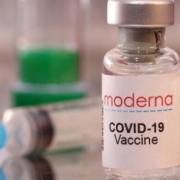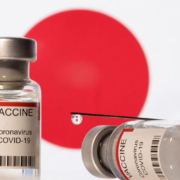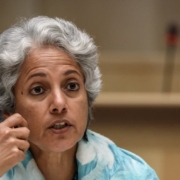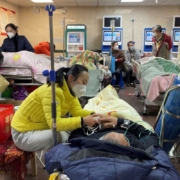Strategies to Increase Diversity in Rare Genetic Disease Trials
Strategies to Increase Diversity in Rare Genetic Disease Trials
By Rebecca Sutphen, MD, FACMGG, Co-Founder and Chief Medical Officer, InformedDNA and Karmen Trzupek, MS, Board-Certified Genetic Counselor
Diversity in all clinical research—including rare disease research—is currently under scrutiny, partly because of disparities experienced with COVID-19. Rightly so, as data show that 86% of genomics studies to date have involved people of European ancestry, which has limited the potential benefits of genomic research for many populations.[1]
Conversely, clinical trials that better reflect real-world genetic variation hold the promise of more efficacious therapies for broader populations. This is especially true within the rare disease space since diverse individuals represent a diversity of genetic data and molecular mechanisms of disease. It is critical to understand if and how experimental therapeutics act on individuals with different underlying genetic variations of rare conditions.
Studies suggest that only about 5% of Americans have ever participated in a clinical trial, with less representation among minorities, people with lower education levels, and other challenging socioeconomic factors, such as lower income.[2] In rare disease clinical trials, where patients are difficult to identify, ensuring that trials are more inclusive of the entire patient population who might benefit from a therapeutic becomes even more essential.
Clinical trial diversity encompasses more than just ethnicity. True diversity accounts for numerous facets, including age, gender, sexual orientation, physical ability, disease spectrum, geography, income, and education, among others. Interestingly, research reveals that breaking down just two barriers—language and digital access—can increase clinical research participation by 50%.[3]
Developing culturally and linguistically competent communication is an excellent first step toward increasing clinical trial diversity, but more can be done. The following additional strategies can be used to overcome challenges and promote more inclusive rare disease clinical trials:
- Engage advocacy groups (early and often)
- Create more inclusivity at the study design stage
- Understand and surmount barriers at an individual level
- Adopt telemedicine and technology-driven solutions
Engage advocacy groups
Advocacy groups often act as the voice of the individuals who rare disease studies try to engage. These groups deeply understand their populations’ specific barriers to clinical trial participation—and often, how to conquer them. They may assist with financial, language, education, and other obstacles common to their populations.
For example, advocates for patients with the rare genetic disorder Usher syndrome understand that mutations in multiple different genes can cause the disease, resulting in a wide degree of disease severity. While all Usher syndrome patients may experience loss of hearing and vision, the degree of these losses vary depending upon the genetic subtype. As a result, individuals may require Braille, American Sign Language, or tactile sign language to continue to be able to communicate with others. Paradoxically, younger patients with the most severe form of the disease, Usher syndrome type 1, may require less accommodative language, as their congenital sensorineural deafness makes them excellent candidates for early cochlear implantation, if desired. The advocacy groups understand that in order to successfully advance clinical trial research, they need to actively acknowledge these different lived experiences, address needs for accommodation on an individual level, and build unity across the entire patient community.
Genuinely partnering with advocacy groups as early as the pre-clinical phase can give sponsors the invaluable insights needed to craft study designs that minimize burdens and maximize participation. By listening to patients, much can be done proactively to encourage and enhance research participation.
To that end, sponsors may want to consider involving patients in a steering committee. The more sponsors can meet patients wherever they are on their health journeys, the greater the likelihood of engagement. Sponsors must commit to gauging patients’ readiness to receive information, partnering with families, and providing needed resources to the community.
In instances where a study population is historically underrepresented in clinical trials—or mistrustful of them—advocacy groups can strengthen trust and rapport. They can help bridge the gap between researchers and families by informing, connecting, identifying, and enhancing a sense of community.
Create inclusive study designs
Patient-centric study designs can go a long way toward easing recruitment and retention challenges for rare disease populations. For example, sponsors who recognize that patients and their families may be physically or financially unable to travel regularly to a research site could incorporate telehealth visits and remote monitoring into their study designs.
Widening eligibility criteria is another method to increase the diversity of a study without sacrificing its scientific rigor. Some patients with preexisting conditions may still be valuable participants, for instance. Sponsors also may want to consider re-enrolling early phase participants in later phase studies and operating extension trials with crossover—where patients who were on a placebo then “cross over” to get the active drug.
These steps could make a significant difference in a patient’s willingness to participate because they offer increased access to potentially beneficial treatment. While this access is important in rare disease communities where approved treatments may be scarce or nonexistent, it becomes critical to enrollment success when multiple studies are competing and patients have options for participation.
To fill in the genetic testing gaps that often hinder the identification of eligible participants, sponsored testing programs can be leveraged in conjunction with a clinical trial. Some clinical research studies screen for known genes but then back-end the screening with broader sequencing to expand the research data set and advance scientific understanding of a rare disease. Sponsored programs can play a key role in promoting more comprehensive genetic testing when insurance may not cover the costs. In all sponsored testing programs, however, genetic counseling is vital to ensuring that patients have access to a knowledgeable specialist in the genetics of the condition who can take the time to explain test results and their implications for the patient and their families.
Understand and address individual barriers
While disparities may exist at the group level, it is increasingly evident that equity happens at the individual level. Attaining real equity requires providing each patient with what they need to participate in research and obtain treatments. These solutions must be focused on personal needs, which entails establishing a rapport with each unique individual within any given population.
Providers such as genetic counselors and community physicians are in a prime position to foster these individual relationships. By working to understand the concerns and needs of each person, they can improve diversity and equity in clinical research. While academic medical centers tend to interact with the most involved and committed patients, physicians and genetic counselors working together at the community level can help patients address obstacles that would otherwise prevent their participation.
Adopt telemedicine and technology-driven solutions
Telemedicine services are an efficient and cost-effective remedy to some known barriers to research participation, including patient location, socioeconomic factors limiting an individual’s ability to take time off of work, and the burden of travel to a clinical site for screening or other services that can be completed via virtual visits. For example, telemedicine has benefitted multiple studies of complex genetic neurodegenerative diseases in which initial patients’ family members were symptomatic, at risk, or known to be affected. Because those family members were scattered across the country, they could not easily get to the same study site. However, telemedicine services enabled them to be screened for the study remotely, regardless of their location.
Integrating telemedicine genetics experts facilitates more equitable access to genetic counseling and testing. By pairing testing advances with telemedicine genetic counselors, potential participants can undergo genetic screening for clinical trial inclusion from the comfort of their homes. Furthermore, pre-screening and post-screening conversations with genetic counselors can be instrumental in ensuring patients feel supported and empowered.
Likewise, remote, telephone-based medical interpreters can navigate language barriers to give patients who don’t speak English as much access to clinical research as those who do. Populations that are geographically dispersed, lack transportation, or lack economic means can also gain greater access to studies through technologies that enable remote data collection and in-home monitoring. By reducing the number of trips participants must take to a study site, such technologies make patients more likely to enroll in and remain in a study.
Expanding diversity drives more equitable outcomes
Increasing clinical trial diversity is not a simple task, especially when working with already limited rare disease populations. However, it is possible with proactive strategies to engage advocacy groups, create more patient-centered study designs, address individuals’ unique barriers, and leverage beneficial technology solutions.
There is no question it is worth the effort. Ensuring clinical trials match real-world genetic diversity more closely can help the industry find new ways to finally achieve more equitable health outcomes.
[1] Fatumo, S., Chikowore, T., Choudhury, A. et al. A roadmap to increase diversity in genomic studies. Nat Med 28, 243–250 (2022). https://doi.org/10.1038/s41591-021-01672-4
[2] Jiang, S., Hong, Y.A. Clinical trial participation in America: The roles of eHealth engagement and patient-provider communication. Digital Health 7 (2021). https://doi.org/10.1177/20552076211067658
[3] 2020 WCG patient forum. WCG Clinical. (2021, November 1). Retrieved May 6, 2022, from https://www.wcgclinical.com/events/2020-wcg-patient-forum











